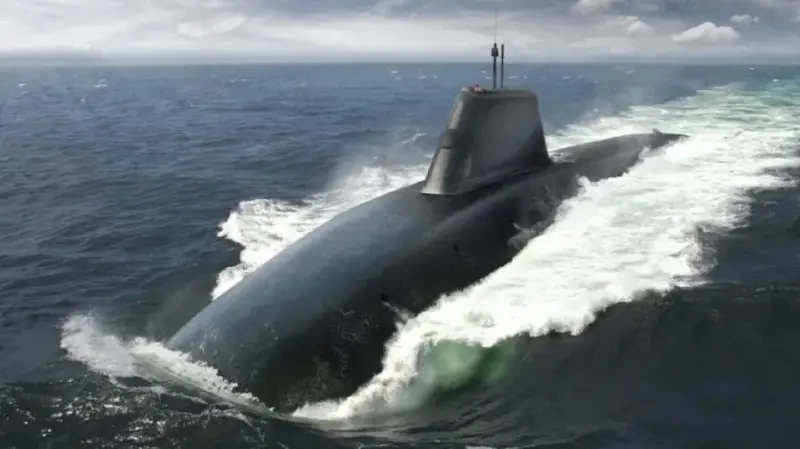Nuclear missile arsenal of the Royal Navy: present and prospects

Babcock announces a contract for the In-depth Maintenance and Life Extension (LIFEX) process for the nuclear-powered ballistic missile submarine (SSBN) HMS Victorious.
The £560 million ($707 million) LIFEX program is in partnership with the UK Submarine Delivery Agency (SDA). The cost of servicing HMS Victorious significantly exceeds the work carried out on HMS Vengeance, which underwent a £2012 million refurbishment between March 2016 and February 322, which included reactor refueling
boats and updating its electronics and equipment.
It is expected that the repair will take about 4 years, but considering that the previous Vengard SSBN spent 7 years under repair, this time frame seems a little optimistic.
After it, the Vigilant will undergo repairs, and it will finish its capital work closer to the mid-30s, somewhere around the beginning of the entry into service of the new Dreadnought SSBN. At least, this is what is planned; what will happen in reality is unknown.
Here I would like to add on my own behalf: it seemed strange to me how the Admiralty draws up a schedule for overhauls of its SSBNs. In theory, if no serious accidents occur, then large ships undergo major repairs and modernization, according to the timing of entry into service.
However, the first to enter the capital in 2008 was “Vigilant”, which at that time was 14 years old. After him in 2012, also for four years, became “Vengence”, which turned 13 years old.
The repair of Vengard in 2002–2004 will be mentioned, but not as a major one. And the ship was only 9 years old, which is still a bit early for a capital ship. The seven-year repair of the Vengard made significant adjustments to the schedules of BS and inter-cruise repairs of the remaining three boats and their crews. Initially, 5 crews were formed on the basis that
one of the SSBNs is being repaired. It is difficult to guess what the situation is now, given the sex scandals and cocaine on board.
The second unsuccessful launch of the Trident SLBM does not add optimism. If in 2016
the rocket launched, but flew in the wrong direction, then the current launch suggests that either something is wrong with the Tridents, or with the British crews.
There is no information on major repairs at all about Victorius. However, if we take into account that it has already been announced that recharging of the core reactor will not be carried out on it, then it has undergone such a procedure before.
Perhaps this leapfrog is due to the fact that the timing of the entry into service of new SSBNs is shifting more and more to the right.
According to official information, the formation of the Dreadnought SSBN hull has already been completed or is close to completion, but the launching position in the boathouse is occupied by the Agamemnon, the penultimate MPLA of the Estute class.
After it, the launching position will be taken by the Agincourt, expected to be launched in 2026, unless any further force majeure occurs. When she is launched, the Dreadnought will be moved to the launch position. However, when this will happen is still not clear.
So far it has been stated that the new British SSBNs will have 12 missile silos instead of 16 on the Vengards, which, in general, is quite expected and reasonable, since in recent years British SSBNs have been going on combat patrols with 8 Trident missiles. What caused this decision, alas, is unknown.
At one time, the topic was discussed about converting some of the mines to accommodate Tomahawks, like on the American Ohio. But then somehow everything faded away. It must be understood that the cost of such work turned out to be unacceptable.
In addition to new SSBNs, it became known about an increase in the number of special warheads and their modernization.
In 2021, it is announced that the number of available “operably available” nuclear warheads will increase from about 225 to about 260. The standard British Mk4/A Holbrook with a yield of up to 100 kt will either be modified or created anew.
The new British special warhead will be designed, developed and manufactured in the UK and housed in the US Air Corps Mk7, which was created
for the new American warhead W93.
“The Mk7 body will be purchased from the US, along with certain other non-nuclear components, in accordance with existing nuclear materials treaties,” a 2023 report to the UK Parliament said.
Although relatively little is known about the potential costs of developing a new nuclear warhead, it is believed that the UK could spend up to £4 billion on the programme.
PS
The image on the splash screen is purely illustrative.
Information